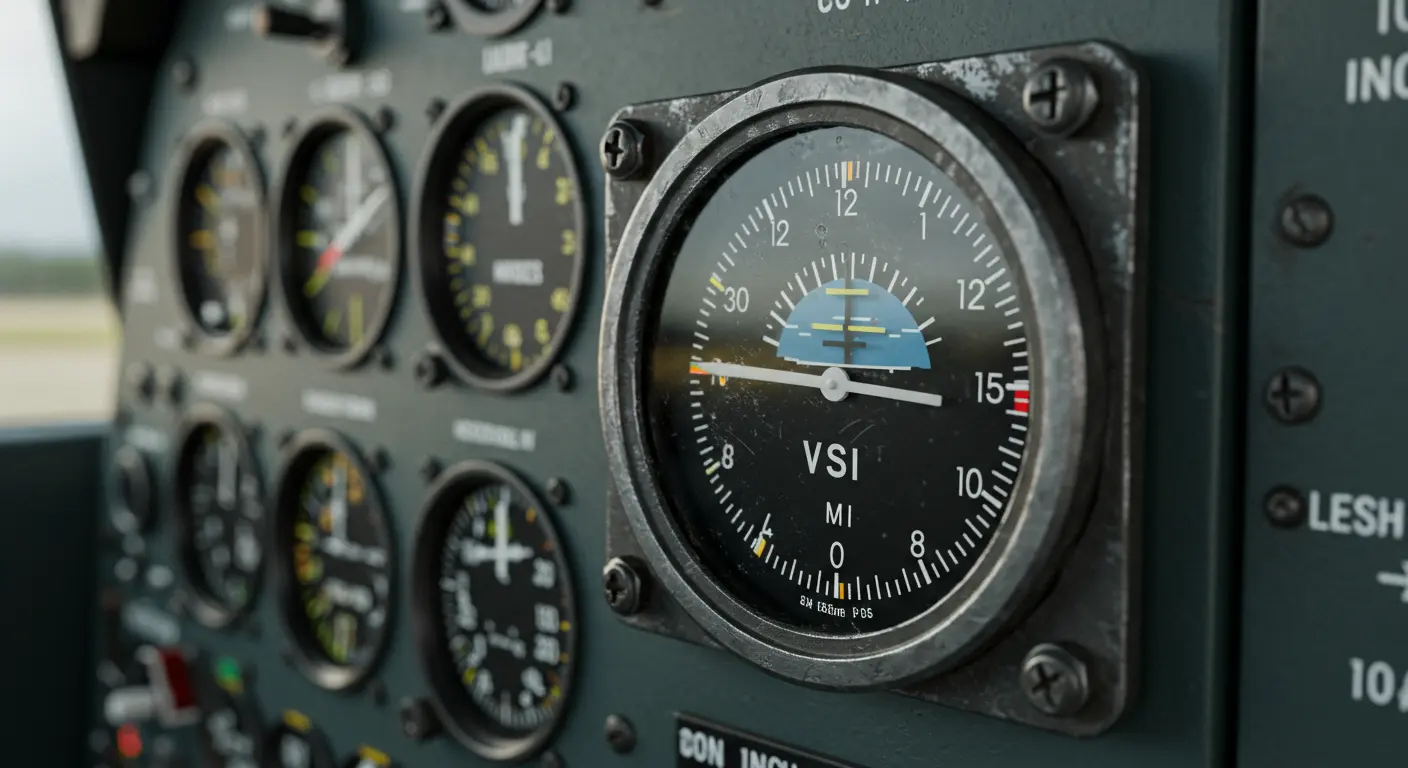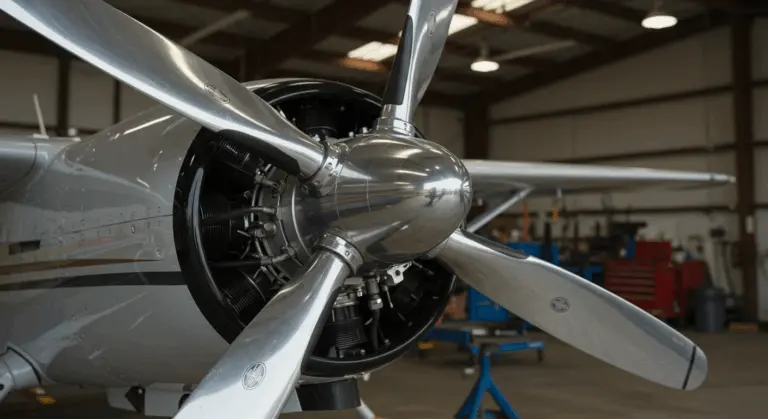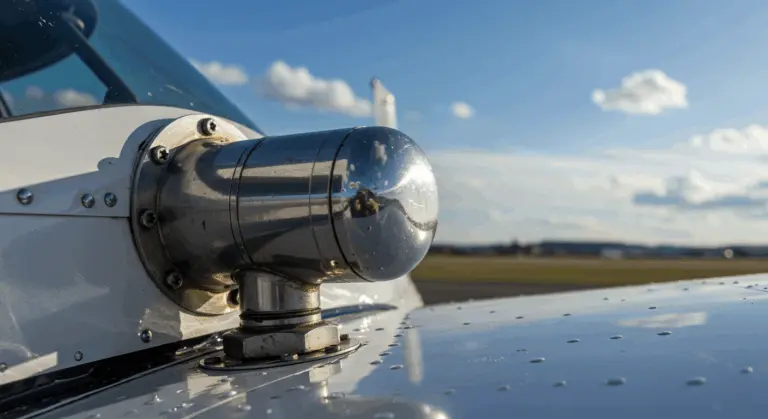Understanding the Vertical Speed Indicator – How It Works
What is a Vertical Speed Indicator?
A Vertical Speed Indicator (VS), also known as a Rate of Climb and Descent Indicator (RCD), ranks among aviation’s essential flight instruments within the standard “six-pack.” This gauge shows an aircraft’s vertical movement through the atmosphere, indicating whether you’re climbing toward the clouds, descending toward earth, or maintaining steady level flight.
The VS quantifies vertical movement in feet per minute (FPM), displaying this information with a straightforward dial design. Zero appears at the center, while positive values stretch upward to indicate climbs and negative values descend to show descent rates. Depending on your aircraft’s performance envelope, you’ll typically encounter ranges spanning 0-2000, 0-3000, or 0-4000 FPM.
The VS helps you maintain for maintaining precise control throughout every phase of flight:
-
Takeoff: Confirms a positive rate of climb.
-
Cruise: Helps maintain level flight.
-
Approach and Landing: Assists in controlling descent rates.
This accuracy is essential when flying through clouds or darkness, where the outside world disappears and instruments become your only window to reality.
How Does a Vertical Speed Indicator Work?
The Vertical Speed Indicator works using a pressure differential system, constantly measuring how static air pressure changes to determine whether your aircraft is climbing or descending through the atmosphere.
At the heart of a traditional VS lies a sealed diaphragm connected to your aircraft’s static port system. This sensitive membrane expands and contracts as static pressure fluctuates around it. The key innovation is: a precisely calibrated leak—essentially a tiny, restricted orifice—creates an intentional delay in pressure equalization.
During level flight, pressure remains constant and the VS reads zero. During a climb: outside static pressure drops, causing the diaphragm to expand before the instrument case pressure can catch up through that restricted orifice. This expansion drives the needle upward, showing your rate of ascent. During descent, the process reverses—increasing static pressure compresses the diaphragm, sending the needle downward to reveal your descent rate.
Standard Isis have a built-in delay: they lag 6 to 9 seconds before displaying accurate readings. Why? The instrument needs time to register pressure differentials through that calibrated leak we discussed earlier.
The Role of the Pitot-Static System
The pitot-static system provides the pressure data the VS needs, delivering the pressure data that makes vertical speed measurement possible. This same system feeds your airspeed indicator and altimeter, creating the three key sources of flight data that keeps you oriented in three-dimensional space.
The pitot-static system has two fundamental components: the pitot tube, which captures dynamic pressure from your aircraft’s forward motion, and the static ports, which sample ambient atmospheric pressure surrounding your aircraft. While the VS depends primarily on static pressure data, this entire system provides comprehensive information that gives pilots comprehensive awareness of their aircraft’s movement through space.
Static ports are particularly important in VS operation—they detect subtle atmospheric pressure changes that accompany altitude variations. Engineers position these ports strategically on the fuselage, selecting locations where they can accurately sample surrounding air pressure without interference from the aircraft’s movement. From there, a network of tubing channels this static pressure data to your VS and other critical instruments.
When the pitot-static system fails, flight safety is compromised. Consider this scenario: static ports become blocked by ice, insects, or debris. Your VS loses its ability to detect pressure changes and stubbornly displays zero, regardless of whether you’re climbing toward the stratosphere or diving toward the ground.
Understanding VS Readings
Vertical Speed Indicators vary depending on aircraft requirements. They come in several distinct variations, each engineered to meet specific aircraft requirements and operational demands. Understanding these differences helps in choosing the appropriate instrument.
Range capabilities separate standard Isis into distinct categories. General aviation aircraft commonly feature 0-3000 FPM models, while high-performance aircraft—capable of more aggressive altitude changes—typically employ 0-4000 FPM variants that can track their more dynamic vertical movements.
Response time creates another crucial distinction. Traditional models carry that characteristic 6-9 second lag we discussed earlier. In contrast, Instantaneous Vertical Speed Indicators (Isis) use accelerometer technology to deliver near-immediate feedback—valuable for precision flying where every second counts.
Specialized Isis offer additional capabilities with expanded scale designs. These instruments increase needle sensitivity for small vertical speed changes, providing better precision when maintaining specific climb or descent profiles. Pressurized aircraft particularly benefit from this precision, as cabin pressure management demands careful monitoring of vertical speed variations.
Regardless of type, all Isis undergo calibration to match their host aircraft’s unique aerodynamic characteristics, ensuring reliable data across the flight envelope. Modern glass cockpits display VS information differently, integrating vertical speed data into sleek digital displays with customizable formats that adapt to pilot preferences and mission requirements.
Calibration and Maintenance of VS
VS calibration and maintenance are essential for flight safety—inaccuracies in vertical speed indication can cascade into significant navigational errors or create genuinely dangerous flight conditions.
The calibration process focuses on making sure your VS accurately translates pressure changes into precise feet-per-minute readings. The most important component is That calibrated leak we’ve discussed—the tiny orifice that controls pressure equalization rates within the instrument’s mechanism.
Technicians meticulously follow manufacturer specifications during calibration, ensuring the VS reads zero during level flight and responds correctly to pressure variations. Each aircraft type has specific requirements—each aircraft type demands its own calibration approach.
Maintenance includes more than calibration, covering comprehensive pitot-static system health checks. Technicians must verify that static ports remain unobstructed and that every connection in the system maintains integrity without leaks. Any compromise in static system performance directly impacts VS accuracy, potentially causing erroneous readings or exacerbating response lag.
These issues are serious. System leaks or improper calibration can amplify the VS’s inherent response lag, undermining a pilot’s ability to maintain precise vertical speed control during critical flight phases where precision is critical for safety.
Preflight Checks for VS
Every flight begins with a fundamental VS verification: confirming the instrument reads exactly zero while your aircraft sits motionless on the ground. This zero reading sets the reference point for all subsequent vertical speed measurements throughout your flight—an incorrect zero reading affects all subsequent measurements.
Your preflight inspection should extend to the instrument’s physical condition. Examine the face for damage and ensure the glass remains clean and condensation-free—anything that obscures readings compromises safety. The needle should move smoothly without sticking or erratic jumping when the static system experiences pressure changes. Resistance or irregular movement often signals internal mechanical problems.
Static port inspection forms another critical preflight element. You must confirm that all static ports remain completely unobstructed—free from insects, ice, tape, or any foreign objects that could impede airflow. Even partial blockages can render your VS inaccurate or completely unresponsive to altitude changes.
Once airborne, perform an additional verification by observing whether the VS needle returns to zero during stabilized level flight. If the needle persistently indicates climb or descent while other instruments confirm constant altitude, you’re looking at a potential calibration issue or static system leak that demands immediate maintenance attention.
These preflight checks are important safety procedures. A malfunctioning VS can feed you dangerously misleading information about your aircraft’s vertical trajectory, potentially creating hazardous situations, especially during instrument conditions when visual references vanish. Thorough preflight checks reduce the risk of relying on faulty vertical speed data during those critical moments when precision matters most.
Common Malfunctions and Troubleshooting
Although the VS operates on a simple principle, the VS can experience several malfunction types that pilots must recognize and address swiftly. Most VS problems trace back to pitot-static system issues—the foundation upon which the instrument depends.
Beyond static port blockages, several other malfunction symptoms demand your attention:
VS troubleshooting starts with checking the static system. Check all static ports for obstructions—ice, insects, dirt, or maintenance tape accidentally left in place. Aircraft equipped with alternate static sources offer a potential temporary solution; switching to back up systems can sometimes resolve primary static port problems. However, this typically introduces slight calibration offsets that must be factored into your instrument readings.
Internal mechanical problems often manifest as sluggish or sticking needle behavior. These issues typically demand professional maintenance intervention, as they usually involve the diaphragm, calibrated leak, or internal mechanical linkages. Record when and how problems happen—this helps for maintenance personnel diagnosing the root cause.
When your VS provides unreliable information during flight, alternative techniques are necessary. Your altimeter can serve as a crude vertical speed reference by timing altitude changes over known intervals. Attitude indicators and power settings help maintain desired climb or descent profiles. Modern glass cockpit systems often provide redundant vertical speed information through independent sensor systems, providing backup information when traditional instruments fail.







